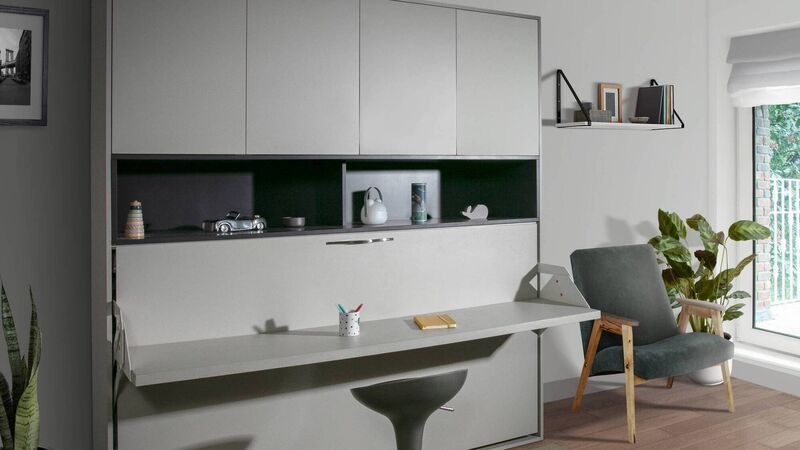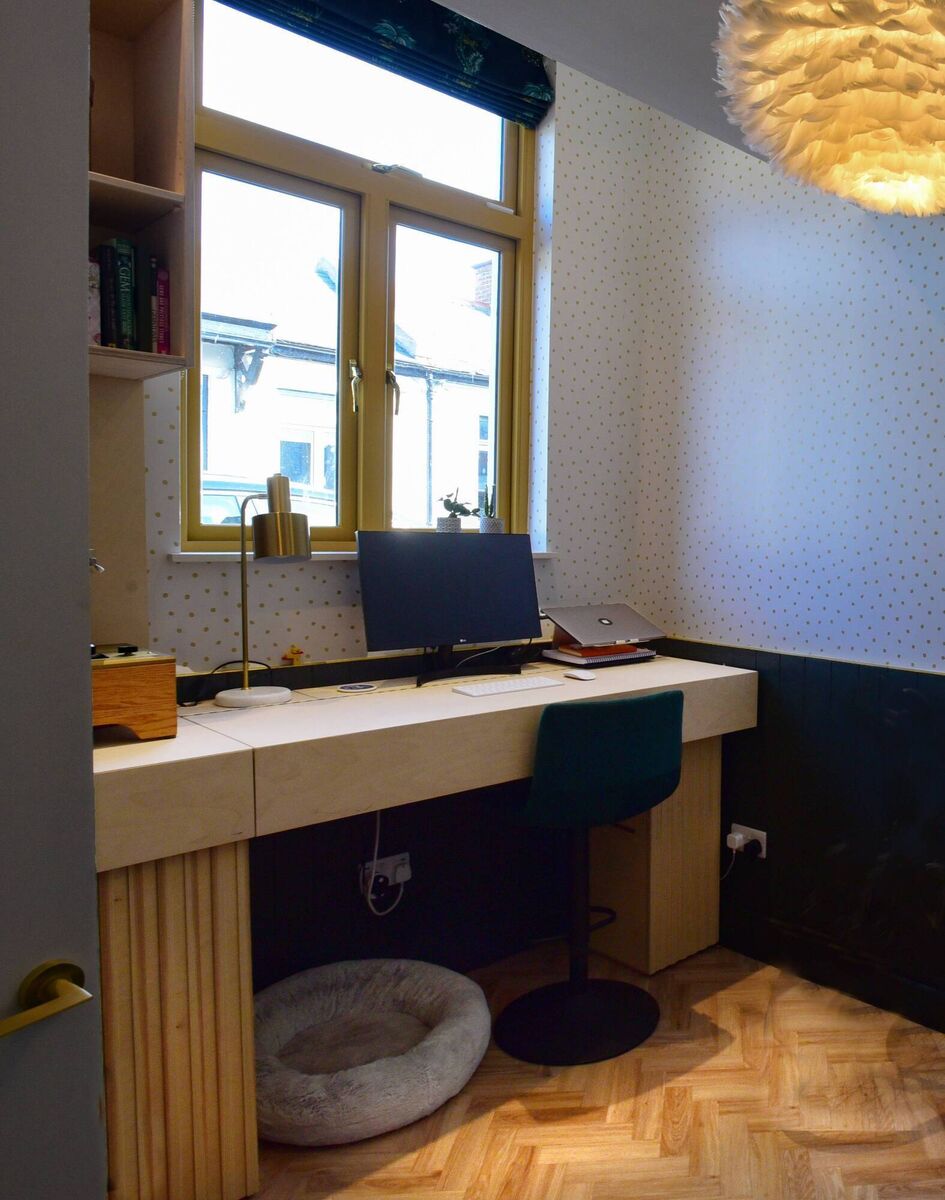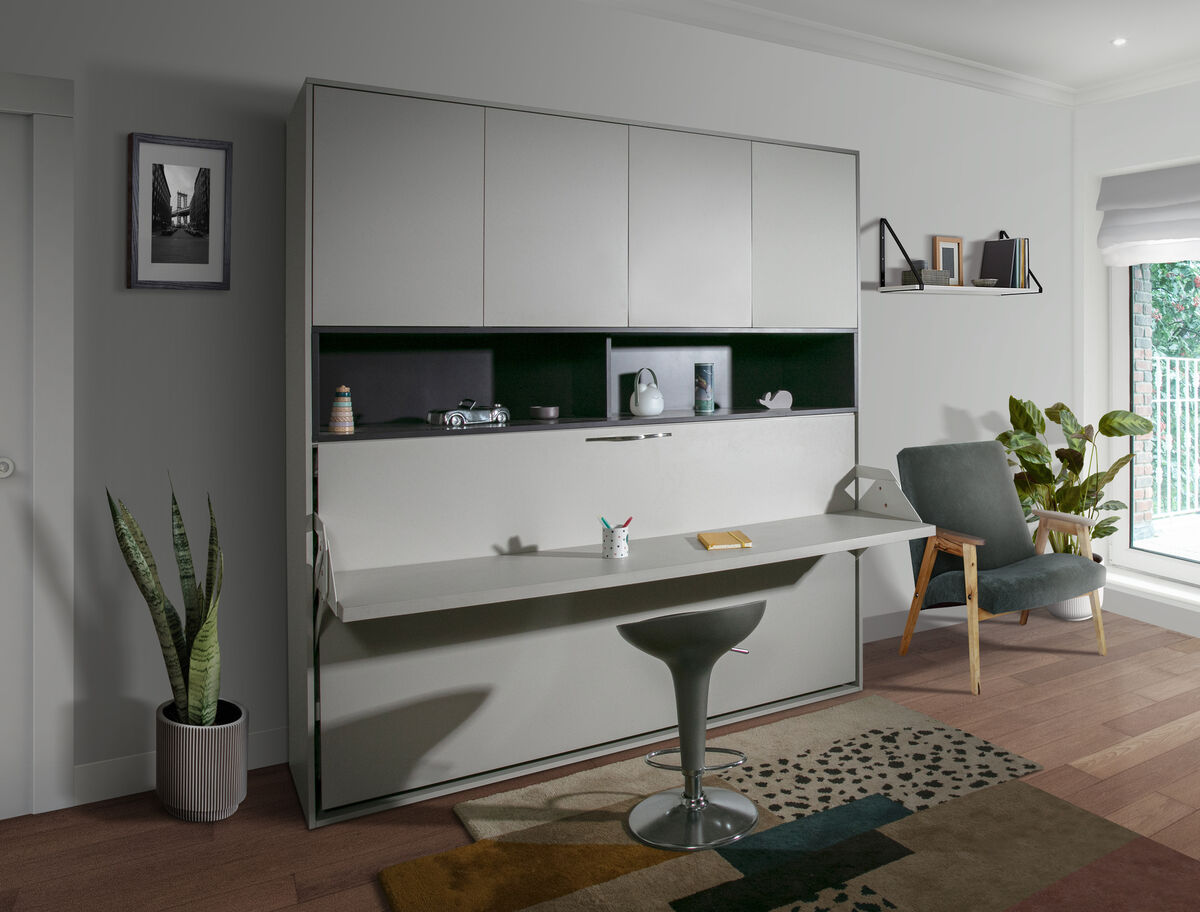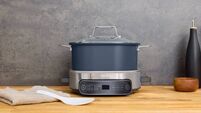Jennifer Sheahan: I live in a tiny house but still have space for my dream home office

A Murphy bed or sofa bed with a hinged desk is perfect for creating a home office that effortlessly turns into a bedroom.
The kitchen table has had its moment as Ireland's most-used desk, and if you’re someone who juggles hybrid work or study at home, you already know the novelty wears off fast.
A functional workspace makes a big difference to your productivity and your sanity. The good news is that with some clever planning, you can carve out a spot that's ergonomic, space-efficient, and easy to disguise when the working day is over — even in the tiniest home.
Let's look at what really matters when designing a compact home office or study zone, particularly if that area needs to double as a dining space, a spare bedroom, or even part of your living room.
You need less space than you think. You don't need a huge home office to work comfortably.
In fact, most people can work perfectly well in a footprint as small as 80cm deep and 120cm wide. That's roughly the size of a narrow console table — small enough to fit in a hallway, alcove, or even the end of a bedroom.
This means there are likely many options for where you can set up shop, even in a very small home.
If you're designing for a dual-purpose room, think vertically as much as horizontally. Wall space is often underused but can make all the difference for storage and organisation.
Even a few floating shelves above your desk give you room for files, books, and chargers without cluttering your main surface.
Ergonomics is hot right now. A beautiful desk is useless if it leaves you with aching shoulders and a stiff neck. I don’t know why it took so long for ergonomics and visual appeal to get familiar with each other, but thankfully, it does seem that comfort and style are finally seeing eye to eye.
The basic principles of ergonomics dictate that the top of your screen should be at eye level, and your chair should allow your feet to rest flat on the floor with knees at roughly a 90-degree angle.
If you don't have the budget or space for a fully adjustable office chair, a simple fix is to add a seat cushion and a footrest. Even a small box or a stack of sturdy books pushed against the wall can work in a pinch.
For laptop users, a stand plus an external keyboard and mouse will have a positive impact on your posture. These items are inexpensive, and they tuck away easily when not in use.
Think about your wrists, too. If you spend hours typing, add a wrist rest or a mouse mat with a cushioned pad. It's a tiny addition that prevents long-term strain.
A key aspect of good ergonomics is lighting. It’s not just about aesthetics — it impacts your focus and eye health. Natural light is ideal, so if possible, position your workspace near a window. Just avoid glare on your screen by angling it slightly or adding a sheer curtain.

When daylight isn't enough, layer your lighting. A dedicated desk lamp with an adjustable arm is ideal, and with the explosion of rechargeable lamps on the market, you can add one easily to any area, even if you don’t have enough sockets. The ideal amount of light is around 500 lumens per square metre.
Smart bulbs are a fantastic option in dual-purpose office areas. You can shift from bright, focused light during the day (higher kelvins) to soft, warm light (lower kelvins) in the evening when the room transforms back into a dining area, hallway, or guest bedroom. This is helpful not only for your ability to see properly, but also to create a visual and mental shift between working hours and relaxing time.
The right chair can make or break your workday, but in a compact home, it needs to be both ergonomic and easy to stash away. A full-size office chair might not suit a dual-purpose room, and it can be difficult to find an aesthetically pleasing, affordable office chair that doubles as dining or guest seating outside working hours.
If you simply cannot find a good chair with proper ergonomic support, a seat pad with back support can make a regular chair much more comfortable for long sessions. Whichever option you choose, aim for something that encourages good posture and doesn't leave you with pins and needles after an hour. Comfort is king.
One of the easiest ways to create a dual-purpose space is with a folding desk. Wall-mounted versions like drop-leaf desks are brilliant for tiny homes — they fold completely flat when not in use. There are also stylish freestanding desks that fold up into slim sideboards or cabinets, perfect for hiding away the "office" after hours.
If your work involves a monitor, consider mounting it on the wall with an adjustable arm. It keeps your desk clear, saves precious surface space, and you can fold it flat against the wall when you're done.

For spare rooms that need to moonlight as offices, a Murphy bed with an integrated desk is a game-changer. Modern versions have clever hinges, which allow the desk to stay level as the bed folds down, so you don't even need to clear your work surface. It's an investment piece, but it gives you two rooms in one with minimal effort.
The real secret to a compact workspace is how easily it disappears when you're not working. Storage is everything. If installing shelves or drawers is not an option, you can use portable storage carts that tuck under your desk and can roll away into a cupboard or corner at night.
I have a desk with a hinged lid, which is perfect for quickly stashing items away. Storage ottomans are ideal for hiding keyboards, cables, and notebooks while doubling as extra seating when needed.
Nothing screams "office" like a tangle of wires, so invest in cable covers or cable clips to keep things tidy.











